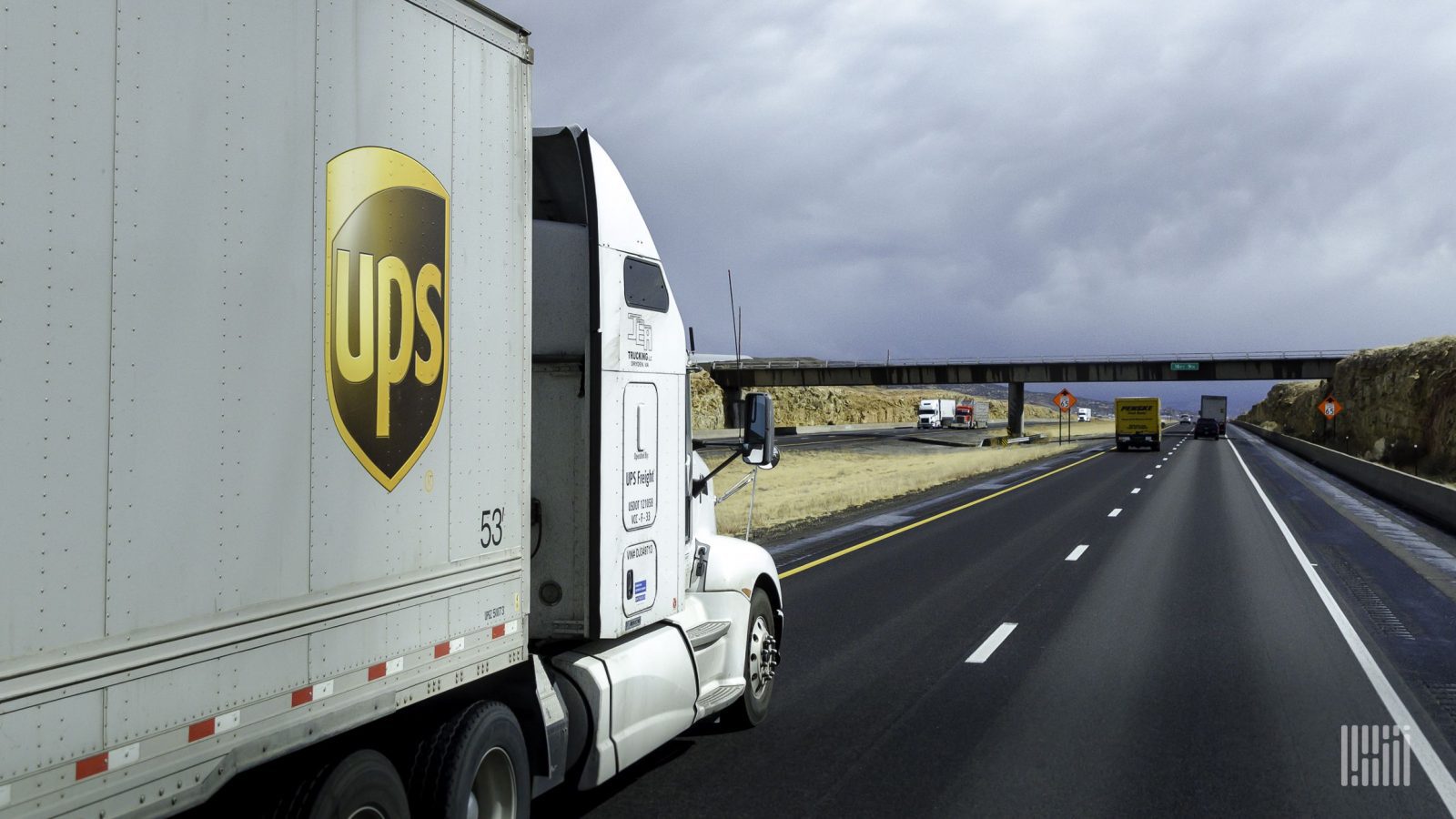For several years, questions have surfaced over when, or even whether, Inc. would begin to leverage its expanding delivery network to divert traffic from its largest vendor, UPS Inc., and move it in-house.
As Amazon’s logistics network catches up with fulfillment needs, it is better positioned today to migrate “at least a large part of its volumes” from UPS, he said.
How large would be anybody’s guess. UPS has publicly said that Amazon accounts for about 11% of its annual revenue of $102 billion. That percentage will fall under 11% by the end of 2022 as UPS continues to cull lower-margin Amazon shipments from its system.
UPS reported that second quarter U.S. daily package volumes missed its forecast by about 222,000 packages. More than half of that came from shedding volumes from large shippers like Amazon.
UPS never comments on customers’ volume figures. However, in an eye-popping estimate, Shanker said that Amazon could account for between 35% and 40% of UPS’ domestic volumes. “Those are huge numbers if they are accurate,” said John Haber, chief strategy officer of Transportation Insight Holding Co., a consultancy.
Other factors that could trigger delivery diversion, according to Shanker, include Amazon’s launch in April of Buy With Prime, which allows selected merchants to offer Amazon’s ubiquitous Prime offering, including deliveries, through their online stores. Another is Amazon’s service begun in May to enable last-mile deliveries for brick-and-mortar retailers, he said. Both initiatives could cut into UPS’ delivery volumes with the e-tailing giant, Shanker said.
Shanker’s reduction is based on macroeconomic pressures felt across the transportation industry, as well as a mean reversion in UPS’ earnings per share following two years of pandemic-related bottom-line pops.
Haber said that Amazon has the warehouse and fulfillment infrastructure in place to be able to bring UPS business in-house. The question becomes whether it has enough drivers to support the influx of volume. Haber said that Amazon will continue to shed UPS volumes in favor of its internal delivery network. The issue is how fast it will occur, he said.
Neither company responded to requests for comment. In the past, each has said that it is satisfied with the status quo.
Satish Jindel, founder and CEO of consultancy ShipMatrix Inc., said the relationship works well for both. Amazon heavily relies on UPS for long-haul, typically two-day deliveries of goods normally not stocked in Amazon’s warehouses, according to Jindel. Amazon does not offer pickups and uses the vast UPS network for critical end-to-end service, Jindel said.
At the same time, UPS is happy with the margins it generates from the Amazon business, he said.
Marc Wulfraat, head of consultancy MWPVL International, said UPS handles volumes that Amazon can’t because Amazon lacks the geographic sweep to do it itself. Until Amazon populates more remote areas with its own buildings, UPS will remain a key part of its delivery program, Wulfraat said.
As an example, Amazon Logistics does not serve Billings, Montana, so it ships there via UPS, Wulfraat said.
A logistics executive familiar with Amazon’s operations said the company is “glad to keep UPS as a partner, as it has traditionally needed all of the available capacity.” With parcel delivery demand projected to remain elevated — though nowhere near that of the past two years — Amazon can dramatically grow its delivery business and still use UPS.
“There is no specific reason to insource UPS volumes unless it becomes cost-prohibitive,” the executive said.
The U.S. Postal Service is the provider that remains most at risk of package leakage, Jindel said. The Postal Service, once Amazon’s largest vendor, has seen its share of Amazon’s business shrink as Amazon insources more deliveries in areas of high population density.
The diversion picked up pace at the start of the year, Jindel said, when the Postal Service introduced pricing based on a shipment’s dimensions, a practice that often results in higher rates for parcels that fall outside the carrier’s stated dimensional requirements. Amazon, along with other Postal Service users, pulled business from the agency once that policy took effect.






